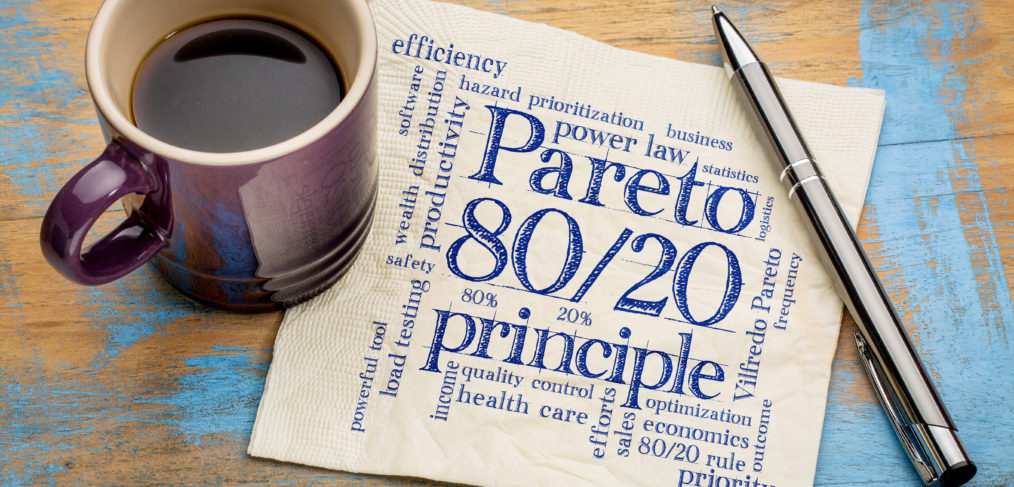Every month or two, I teach a brief course to military veterans who are transitioning into civilian life and have a desire to start a business. One of the points I emphasize is to quickly figure out which of their actions will have a large impact on results and which will have only little or no impact. Often, the things they most love to do are not likely to produce results and those they have no interest in are what have the most benefit. I urge these folks to adopt the “I’ll do whatever it takes” mantra to succeed. And exactly the same is true for all of us who want are involved in generating B2B revenue.
The famous Pareto Principle states that about 80 percent of the effects come from 20 percent of the causes. If you are involved in generating revenue, you need to focus on the activities that provide the greatest return on your time investment, while either letting the others go or outsourcing them to a co-worker or service provider. The trick is to understand the difference between the productive 20 percent and the wasteful 80 percent.
Some of the stuff that probably falls into the 80 percent category includes meetings, reorganizing, begging (for budget or people), socializing with the boss and co-workers, and minor tweaks to things like articles, graphics and color schemes. Reporting also falls into this category unless it is for actionable purposes. Sending repetitive promotions where the response rate is anemic is also unproductive.
Enough about the wasteful 80 percent. What actions are more likely to get you the desired results?
In B2B marketing, the 20% of activities that produce 80% of the benefits are directly related to increasing brand awareness, generating inquiries, qualifying leads and helping the sales force meet its revenue objectives. In fact, most of what you can do in the area of sales enablement should prove to be productive. Learning about the newest and most effective strategies and tactics is also valuable, assuming you are doing this to benefit your current employer, and not just to enhance your resume. Anything that you can do to optimize (or if necessary overhaul) your marketing and sales model will reap dividends, as will the ability to capture data and use it effectively.
The Right 80/20 Mindset
There are two other soft skills that fall into the valuable category. The first is continually learning about and applying, best practices from your peers. By the way, a lot of the best education happens outside of the office, when you interact with the people and companies who will buy from you, partner with you, or recommend you. As a marketer, you need to know these people where they live, not as you imagine them.
Last, but not least, is a propensity toward action. To borrow from a previous post, I talked about how Peter Drucker, in his seminal book, Managing Oneself, made the following observation: “For example, a planner may find that his beautiful plans fail because he does not follow through on them. Like so many brilliant people, he believes that ideas move mountains. But bulldozers move mountains; ideas show where the bulldozers should go to work.”
No amount of magical thinking will make prospects respond to offers or purchase products and services. You and I need to take action to encourage people to act, or at least be there when they type in a search term that is related to what you are offering. This is the stuff that produces big results.
Best of success as you learn what is needed to do your job better, then jump on the B2B revenue generation bulldozer.
Guest post by: Christopher Ryan CEO or Fusion Marketing Partners and Center for Business Modeling.
Chris is a SCORE colleague and a marketing and sales maven. We are super fans of each other’s work. The following post was published by Chris on his blog in November of 2019.












